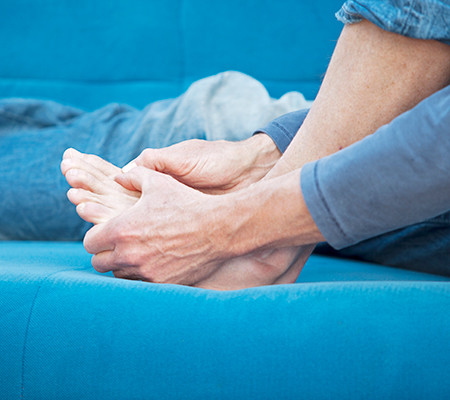
Pain and tenderness are the most common bunion complaints, but symptoms can worsen over time.
Patients usually describe them as a lump or bump on the inside of their big toe.
The bumps they’re referring to are bunions. They form when the first metatarsal, which is the bone just behind your big toe, shifts inward and the big toe shifts outward.
“They’re usually caused by pronation, which is flattening of your arch, or hypermobility of your foot,” said Dr. Amy Jaeger, a Marshfield Clinic Health System podiatrist.
Bunions aren’t genetic, but they may be common among members of the same family because people get their foot structure from their parents.
Bunions aren’t just cosmetic problems
You may first notice a bunion because you don’t like the way it looks. Eventually it can progress to a more serious problem.
“Bunions get worse over time,” Jaeger said. “Unfortunately, no one can tell you when it’s going to get bad or how bad it’s going to get.”
Pain and tenderness where the bump rubs against footwear are the most common complaints. Bunions can cause other problems, including:
- Altered gait
- Shifting weight to avoid pain
- Balance problems and falls
- Arthritis in the big toe joint
- Hammer toes (a condition that causes toes to curl downward instead of pointing forward)
- Painful rubbing against the second toe
Call your doctor if you have a bunion that is causing any of these symptoms.
Start with conservative treatment
You can do things at home to keep your foot comfortable and possibly prevent a bunion from getting worse.
Supportive shoes and special arch support insoles may prevent bunions from getting worse by reducing over pronation. Look for shoes with a wider toe box that provides more room for the bunion.
Avoid narrow shoes, such as high heels, that rub on the bunion. Flip-flops or walking barefoot are appealing because nothing is rubbing on the bunion, but you should avoid those, too. Too little arch support leads to over pronation that can make the bunion worse.
Foot exercises won’t cure a bunion by shifting the bones back into place. Drugstore products like bunion shields can prevent your shoe from rubbing against the bone, but they won’t cure a bunion.
Surgery can help painful bunions
Your doctor may recommend surgery when conservative treatment no longer works.
More than 20 surgical procedures exist to treat bunions. They range from shaving a mild bunion to fusing the joint. Recovery times for bunion surgery vary. You may be able to walk the next day or you may be off your feet for six weeks.
“Surgery has risks and should be taken seriously,” Jaeger said. “You should only have surgery if your bunion becomes painful or starts affecting your balance and gait. It is not a cosmetic procedure.”
Related Shine365 posts
A pain in my… heel? What you need to know about plantar fasciitis


Oh, me again, I have had bunion surgery in the long ago past.
I am wondering if any Podiatry Dr. does the Lapiplasty three dimensional bunion correction
Hi Donna,
Hope you are doing well. If you'd like to learn more about our Marshfield Clinic Health System doctors who specialize in bunion correction, including their contact info and more details, please feel free to click here: https://www.marshfieldclinic.org/doctors/search/?k=%22correction%20of%20bunion%22&ek=Correction%20of%20Bunion
Thank you and hope you have a great day,
Jake
I have pain on the left side of my foot below my small toe. Is this common and what is causing it ?